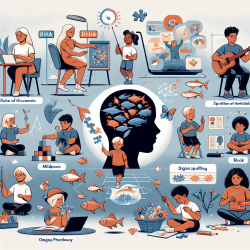Universal Newborn Hearing Screening (UNHS) programs are pivotal in the early detection and intervention of hearing loss in newborns, ensuring that children who are deaf or hard of hearing have the opportunity to develop language and literacy skills on par with their hearing peers. The implementation of a successful UNHS program, however, requires meticulous planning, quality control, and continuous improvement. Drawing from the comprehensive research presented in "A Model Universal Newborn Hearing Screening Program for Hospitals and Birthing Facilities," this blog post aims to guide practitioners and healthcare providers on enhancing their skills and understanding the critical components of an effective UNHS program.
Key Components of a Successful UNHS Program
Defining the Target Hearing Loss
The first step in planning a UNHS program involves establishing a clear definition of the target hearing loss. This definition should align with the Joint Committee on Infant Hearing (JCIH) 2000 Position Statement, which identifies permanent bilateral or unilateral, sensory or conductive hearing loss, averaging 30 to 40 dB or more in the frequency region important for speech recognition as the target. Understanding the specific type of hearing loss to screen for is essential for selecting appropriate screening technologies and protocols.
Stakeholder Engagement
Identifying and engaging hospital and community stakeholders is critical for the success of UNHS programs. Stakeholders include healthcare providers, audiologists, early childhood educators, and families of children who are deaf or hard of hearing. Gaining the support of these stakeholders ensures that the program is well-integrated within the community and that it meets the needs of all involved.
Quality Monitoring and Continuous Improvement
A quality monitoring plan is indispensable for evaluating the effectiveness of the UNHS program. This plan should include benchmarks and quality indicators that are data-driven and reflective of the program's goals. Continuous monitoring and evaluation facilitate the identification of areas for improvement, ensuring that the program maintains high standards of care.
Information Management and Technology
Selecting the right information management system and screening technology is vital for the efficient operation of a UNHS program. The technology chosen should be capable of accurately identifying the target hearing loss, while the information management system should facilitate easy tracking and follow-up of newborns screened. Integration of technology with data management ensures that screening results are accurately recorded and readily available for follow-up actions.
Training and Protocols
Establishing comprehensive training programs for screening personnel and daily operational protocols ensures consistency and reliability in screening procedures. Training should cover not only the technical aspects of screening but also effective communication with families, consent procedures, and data management.
Consent, Communication, and Reporting
Clear policies on consent for screening and the communication of results to families and physicians are essential. These policies should respect the privacy and autonomy of families while ensuring that they are fully informed about the screening process and any follow-up actions required.
Tracking and Follow-up Mechanism
Finally, a robust mechanism for tracking and follow-up is crucial for the success of UNHS programs. This mechanism should ensure that all newborns who do not pass the initial screening receive timely and appropriate diagnostic evaluations and are connected to early intervention services if necessary.
Implementing a UNHS program based on these components requires dedication and collaboration among all stakeholders. By focusing on quality, accountability, and continuous improvement, healthcare providers can create a UNHS program that effectively meets the needs of newborns and their families.
To read the original research paper, please follow this link: A Model Universal Newborn Hearing Screening Program for Hospitals and Birthing Facilities.










